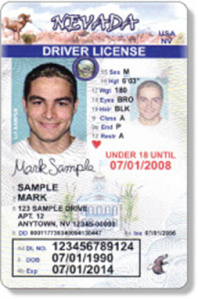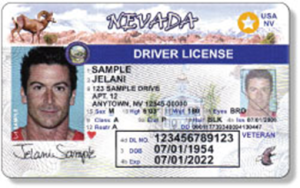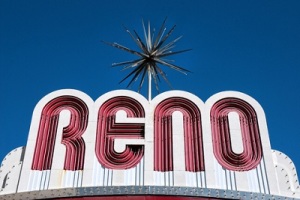
 Underage drinking is a serious concern in Nevada, and police agencies are always hard at work to remind retailers, beverage servers, and teens that if they do not abide by the laws, they will face consequences. One of the front line defenses used to combat teen drinking is the issuance of driver licenses that not only contain standard information such as a photo and birthdate, but also contain additional clues that the I.D. holder is a minor. Do you know what to look for on a driver’s license to determine if you can legally and safely serve the card holder?
Underage drinking is a serious concern in Nevada, and police agencies are always hard at work to remind retailers, beverage servers, and teens that if they do not abide by the laws, they will face consequences. One of the front line defenses used to combat teen drinking is the issuance of driver licenses that not only contain standard information such as a photo and birthdate, but also contain additional clues that the I.D. holder is a minor. Do you know what to look for on a driver’s license to determine if you can legally and safely serve the card holder?
Like other states across the country, Nevada redesigned their driver licenses several years ago to make it easier to spot a minor. Nevada made it easier to spot a minor by switching from horizontal to vertical printing. While driver licenses and identification cards for drivers over the age of 21 follow the traditional horizontal format, driver licenses for those under the age of 21 are printed vertically on the front, and horizontally on the back. Additionally, the DMV imprints an age restriction notice on a minor’s license for any individuals who are aged 18 and under. If the card holder is under 18 at the time of issuance, the card will feature a red banner with the words “Under 18 Until” followed by the date the cardholder will turn 18. Cards issued at ages 18-20 are in the vertical format but do not include the red banner.
When checking a driver license, a hospitality worker should make sure not to always equate the vertically printed with minors only. Remember, 19 and 20 year olds will still hold a vertically printed I.D. card. While they may not be of an age to legally purchase and consume alcoholic beverages, they may still be legally of age to enter 18+ clubs and other venues. Your TAM training will teach you how to use proper diligent inquiry to determine if you’re looking at valid identification. Don’t send revenue somewhere else because you didn’t properly check I.D. Always refer to the birthdate on the front of an I.D. card, and determine if the license is expired or still valid, to correctly determine the card holder’s age, and if you are able to serve them.
For additional tips and tricks for checking I.D. and spotting minors using fake I.D., make sure to complete your mandatory alcohol awareness course with TAM of Nevada. Our seasoned instructors will teach you what to look for, and how to react. Also remember:
- When checking a customer’s birth date, don’t rely solely on the birth year to confirm someone is of legal drinking age. Minors may count on busy servers to only check for the year of birth on an I.D. and try to order alcoholic beverages months before their 21st birthdays.
- Would it be helpful to you to know what to look for on identification from all 50 states and Canada? Most establishments also have a guidebook, like the I.D. Checking Guide, for validating various forms of identification. Ask your manager if you have a guide like this in your establishment and refer to it as needed.

 A new survey from the Substance Abuse and Mental Health Services Administration says Nevada comes in just below the national average for underage drinking with roughly 1 in 4 teens admitting to illegally imbibing. The National Survey on Drug Use and Health found 24.5% of Nevada residents between the ages of 12 and 20 drank liquor in the previous month.
A new survey from the Substance Abuse and Mental Health Services Administration says Nevada comes in just below the national average for underage drinking with roughly 1 in 4 teens admitting to illegally imbibing. The National Survey on Drug Use and Health found 24.5% of Nevada residents between the ages of 12 and 20 drank liquor in the previous month.
 The ban on caffeinated alcoholic beverages, also called alcopop, was one of the biggest stories in the beverage service and sales industry in 2010. Popular beverages such as Four Loko were called dangerous, a binge in a can, and worse. Last November the Food and Drug Administration declared alcoholic energy drinks to be a public health concern. The FDA concluded that caffeine added to malt alcoholic beverages was an unsafe food additive (
The ban on caffeinated alcoholic beverages, also called alcopop, was one of the biggest stories in the beverage service and sales industry in 2010. Popular beverages such as Four Loko were called dangerous, a binge in a can, and worse. Last November the Food and Drug Administration declared alcoholic energy drinks to be a public health concern. The FDA concluded that caffeine added to malt alcoholic beverages was an unsafe food additive (